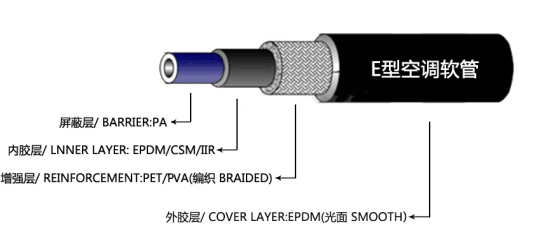Guide to Replacing a High Pressure Power Steering Hose Safely and Effectively
How to Change a High-Pressure Power Steering Hose
Changing a high-pressure power steering hose is an important maintenance task that can help ensure the proper function of your vehicle's steering system. Over time, hoses can wear out or develop leaks, leading to steering difficulties. If you're experiencing issues like whining noises, fluid leaks, or a stiff steering wheel, it may be time to replace the high-pressure power steering hose. This guide will walk you through the steps to change it.
Tools and Materials Needed
Before you begin, make sure you have the following tools and materials on hand - New high-pressure power steering hose - Wrenches (typically metric) - Socket set - Pliers - Fluid-catching container - Power steering fluid - Rags or paper towels - Safety goggles and gloves
Step 1 Prepare Your Vehicle
Start by ensuring the vehicle is parked on a flat surface, with the engine off and the keys removed from the ignition. Allow the engine and power steering system to cool down if it has been running. For your safety, wear goggles and gloves to protect yourself from power steering fluid, which can be corrosive.
Step 2 Locate the High-Pressure Hose
Open the hood and locate the power steering pump and the steering gear. The high-pressure hose typically runs from the power steering pump to the steering gear. Refer to your vehicle's service manual for specific diagrams if necessary.
Step 3 Remove the Old Hose
how to change a high pressure power steering hose

1. Place a fluid-catching container under the power steering pump to catch any leaking fluid. 2. Using the appropriate wrench or socket, carefully loosen and remove the bolts or clamps securing the high-pressure hose at both ends. Be prepared for some fluid to spill out. 3. Once the hose is disconnected, pull it out from its mounting points.
Step 4 Install the New Hose
1. Before installation, compare the new high-pressure hose with the old one to ensure they match in length and diameter. 2. Position the new hose in the same routing as the old one, making sure it does not touch hot components or interfere with moving parts. 3. Secure the new hose by reconnecting it to the power steering pump and steering gear, tightening the bolts or clamps until they are snug (but be careful not to overtighten).
Step 5 Refill and Bleed the Power Steering System
With the new hose in place, you’ll need to refill the power steering fluid reservoir. Use the type of fluid recommended in your vehicle’s manual. After filling, start the engine and turn the steering wheel from lock to lock a few times to help bleed any air from the system. Check the fluid level again and add more if necessary.
Step 6 Check for Leaks
After ensuring that everything is secured tight and the fluid is at the correct level, keep the engine running for a few minutes and check around the connections for any signs of leaks. If no leaks are found, you’ve successfully changed the high-pressure power steering hose.
Conclusion
Changing a high-pressure power steering hose is a manageable task for those with basic mechanical skills. By following these steps, you can help maintain the performance of your vehicle's steering system and avoid more severe issues down the line. Always consult your vehicle’s service manual for specific guidelines and torque specifications related to your model.
-
Ultimate Spiral Protection for Hoses & CablesNewsJun.26,2025
-
The Ultimate Quick-Connect Solutions for Every NeedNewsJun.26,2025
-
SAE J1401 Brake Hose: Reliable Choice for Safe BrakingNewsJun.26,2025
-
Reliable J2064 A/C Hoses for Real-World Cooling NeedsNewsJun.26,2025
-
Heavy-Duty Sewer Jetting Hoses Built to LastNewsJun.26,2025
-
Fix Power Steering Tube Leaks Fast – Durable & Affordable SolutionNewsJun.26,2025

